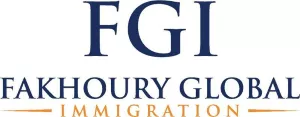As U.S. companies in the science, technology, engineering, and mathematics (STEM) fields would agree, the H-1B visa program has numerous benefits. These companies rely on H-1B visa employees to fill their needs for skilled talent as they often fit well with an organization's structure and objectives. However, businesses may need to resort to a 'Plan B' if their respective H-1B cap registrations are not selected during the annual H-1B cap lottery. Thankfully, they have the E-3 visa option at their disposal.
The E-3 visa is only available for Australian nationals with specialized knowledge and who have earned at least a bachelor's degree (or equivalent) in a related field. In contrast to other visa types, E-3 visas can be renewed indefinitely in two-year increments if the requisite criteria are satisfied. If an E-3 visa applicant is within the U.S. at the time of filing, the filing fee is only $460.00.1 Further, the spouse of an E-3 visa holder can work in the U.S. without needing to apply for a separate employment authorization document (EAD) card; spouses are regarded as "employment authorized incident to status." While an E-3 visa petition is not subject to a lottery selection process, the federal government allocates up to 10,500 E-3 visas each fiscal year. This cap is typically not reached since Australians only use approximately 5,000 E-3 visas per fiscal year.
Unlike H-1B and L-1 visas, the E-3 visa does not signify dual intent. H-1B and L-1 visa holders can declare to the U.S. government that they wish to remain permanently in the U.S. Their respective employers can then file an immigrant-based petition and ultimately obtain an approval for permanent residence (green card). In contrast, E-3 visa holders cannot have dual intent and thus, they declare that their authorized stay is temporary in nature. Nonetheless,, an E-3 visa application cannot be denied solely due to an individual who has begun the green card application process. The government is essentially implying that E-3 visa holders are discouraged from applying for lawful permanent residency, but such applications will not cancel their current E-3 status.
The E-3 visa came into existence through section 501 of P.L. 109-13, the Emergency Supplemental Appropriations Act for Defense, the Global War on Terror, and Tsunami Relief, in 2005. This Act was a result of the Australian – United States Free Trade Agreement (AUSFTA). The visa was created by Congress and was not officially part of
AUSFTA. Still, it is likely that the visa arose from the trade negotiations between the U.S. and Australia that led to AUSFTA. While the visa is in the E category (the E-1 and E-2 visas are often referred to as "treaty trader" and "treaty investor" visas), some of its principal specifications are more like employment-based visas as defined under the Immigration and Nationality Act (INA). For example, E-3 visa applications must undergo the labor attestation process and the proffered position must constitute a "specialty occupation."2
A successful E-3 visa applicant must be an Australian national; lawful permanent residents of Australia do not qualify. The applicant's spouse and children, however, do not need to be Australian nationals. Further, the applicant must have a legitimate offer of employment in the U.S. and have the prerequisite academic or other qualifying merits. If the Visa Waiver Program (VWP) criteria are satisfied, the applicant may travel to the U.S. through the VWP program to find or attend interviews. If the applicant does not satisfy VWP requirements, then he or she may be able to travel to the U.S. on a B-1 or B-2 visitor visa. Though, extension filings can take place while the applicant resides in the U.S., the applicant must be outside of the U.S. at the time of the initial visa filing.
The E-3 visa application process begins when the sponsoring employer submits a Labor Condition Application (LCA) with the U.S. Department of Labor. The LCA confirms that the sponsoring employer will pay at least the required wage level (i.e., prevailing wage) for the proffered position. Once the certified LCA is issued, the applicant must complete Form DS-160 on-line, arrange for a visa interview at a U.S. consulate or embassy while outside of the U.S. Before the interview, the applicant or sponsoring employer must submit the required documents supporting the application to the Department of State (such as a valid Australian passport, job offer letter, job/project descriptions, evidence of available work (e.g., contract agreement such as a Statement of Work), and college degree certificates/transcripts). The applicant also needs to print and bring the final DS-160 confirmation page to the visa interview. If the applicant has a degree from a non-Australian or non-American institution of higher education, then it will be important to obtain an evaluation from a credentialing service that shows how the obtained degree is equivalent to a relevant U.S. bachelor's degree or higher. If the applicant did not attend college, then she or he must provide evidence revealing how accumulated work experience is equivalent to a relevant U.S. bachelor's degree.
During the E-3 visa interview, the applicant will answer questions concerning the visa criteria. The interviewer will likely ask questions relating to personal and professional background details, the proffered position and corresponding project(s), and prior work and travel in the U.S. It will be essential to bring all the above-mentioned supporting documents to the interview. In the event that the immigration officer does not issue an approval at the end of the interview, the applicant may need to provide additional documentation.
In the event of an E-3 extension, change of employer, or change of status., the petition will be filed with the United States Citizenship and Immigration Services (USCIS). A change of status occurs when an individual with prior authorized stay in the U.S. under a different visa category such as H-1B, L-1, or F-1, seeks to change visa status. Under these circumstances, a Form I-129, Petition for a Non-Immigrant Worker must be submitted to the USCIS along with similar supporting documents, the filing fee, as well as other fees that may be required by the US government for the new visa status (including an American Competitiveness and Workforce Improvement Act (ACWIA) fee and a Fraud Prevention and Detection Fee.3 A premium processing request can be included along with Form I-129. With premium processing, the E-3 visa application receives a decision within 15 calendar days upon filing. The filing fee check for premium processing is currently $2,500.00.
We encourage companies to contact an immigration law firm if they wish to learn more about the E-3 visa application process for Australian nationals. An immigration attorney can provide elaboration and customized guidance.
Footnotes
1. On January 4, 2023, the USCIS issued a Notice of Proposed Rule Making (NPRM) that would adjust filing fee requirements for many immigrant and non-immigrant case types, including the E-3 visa. The proposed change would increase the filing fee for E visas from $460 USD to $1,015 USD. In addition, the USCIS also proposes to charge $600 for each employment-based petition to cover the costs of processing asylum cases. USCIS also proposes to increase the proposed H-1B pre-registration fee from $10 to $215. The complete text of this NPRM can be found in the Federal Register, Vol. 88, No. 2, January 4, 2023: https://www.federalregister.gov/documents/2023/01/04/2022-27066/us-citizenship-and-immigration-services-fee-schedule-and-changes-to-certain-other-immigration. The USCIS will accept comments on this NPRM until March 3, 2023. After that date, the USCIS will review comments and then presumably make a decision and issue a final, new fee schedule. Petitioners and legal representatives should monitor USCIS announcements for updates.
2. A specialty occupation is defined as a position that requires a theoretical and practical application of a certain specialized knowledge and the attainment of a U.S. bachelor's degree (or its equivalent) or a higher degree in the specific specialty. Such a degree must be a prerequisite for entry into the position. Employers can refer to the Occupational Information Network website to determine whether a given position is considered a specialty profession.
3. A list of all I-129 fees, as of this writing, can be found at https://www.uscis.gov/forms/all-forms/h-and-l-filing-fees-for-form-i-129-petition-for-a-nonimmigrant-worker.
The content of this article is intended to provide a general guide to the subject matter. Specialist advice should be sought about your specific circumstances.


